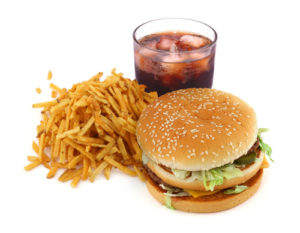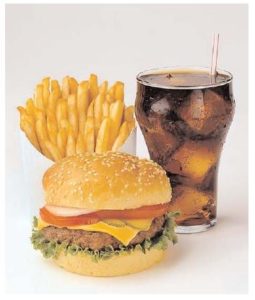
While cell phone companies are promoting the wonders and speed of 5G network connections, some scientists are very disturbed by numerous study results of health harms regarding 5G and radio frequency radiation (used by cell phones). They strongly urge for caution, safeguards for consumers, more studies, and a moratorium on the 5G roll-out.
5G is the latest generation of cell phone technology. One concern is that 5G will substantially increase exposure to radiofrequency electromagnetic fields (RF-EMF) on top of the 2G, 3G, 4G, Wi-Fi already used for telecommunications. We are all exposed to increasing EMF each year from electric and wireless devices - e.g., "smart homes", smart appliances", cell phones, laptops.
The concerned researchers stress that both animal and human studies find that cell phone radiation (RF-EMF) has harmful health effects, including cancer and male fertility. There is also a petition (5G Appeal) signed by more than 430 scientists, pointing out that:
these frequencies clearly affect male fertility and possibly female fertility too. They may have adverse effects on the development of embryos, fetuses and newborns”. This indicates that EMF/RF functions like a classic endocrine disruptor impairing both male and female reproductive functions
"...numerous recent scientific publications have shown that EMF affects living organisms at levels well below most international and national guidelines”. Effects include increased cancer risk, cellular stress, increase in harmful free radicals, genetic damages, structural and functional changes of the reproductive system, learning and memory deficits, neurological disorders, and negative impacts on general well-being in humans. Damage goes well beyond the human race, as there is growing evidence of harmful effects to both plants and animals."
What can you do? We can't eliminate all radio-frequency electromagnetic field exposure, but we can lower exposure. The American Academy of Pediatrics recommendations include: use cell phones in speaker mode, keep the phone at a distance from your head, and avoid carrying the phone close to your body, like in a pocket or bra. Short video: https://www.youtube.com/watch?v=qftCcMcbh2w
By the way, investigative journalism by ProPublica found strong evidence that the FCC is ignoring scientific studies showing harm from cell phones and is instead shielding the telecommunications industry
Excerpts from Microwave News: Time To Invoke the Precautionary Principle for RF, Say Senior Scientists
The precautionary principle should be applied to public exposures to RF radiation. So say four senior academic scientists —including the former director of the U.S. National Toxicology Program (NTP)— in a strongly worded appeal, published today. ...continue reading "Scientists Express Concerns Over 5G and Cell Phone Radiation"

 A very important thing that we can all do to lower our exposure to toxins - heavy metals, pesticides, etc., is to take off our shoes at the door. A
A very important thing that we can all do to lower our exposure to toxins - heavy metals, pesticides, etc., is to take off our shoes at the door. A  Study after study shows that reading to young children is beneficial in several ways, and now
Study after study shows that reading to young children is beneficial in several ways, and now  Seven northeastern states in the US had a record warm month in January 2023. Europe had its warmest January. In fact, it looks like all of Earth had a warm January - it was Earth's seventh warmest January since record-keeping began in 1880.
Seven northeastern states in the US had a record warm month in January 2023. Europe had its warmest January. In fact, it looks like all of Earth had a warm January - it was Earth's seventh warmest January since record-keeping began in 1880. A weirdly warm winter in the New York metro area.
A weirdly warm winter in the New York metro area.


 There is a big problem with the label ORGANIC. Many organic farmers are upset and disappointed with how "organic factory farms" have taken over the multi-billion organic food industry. And they should be upset.
There is a big problem with the label ORGANIC. Many organic farmers are upset and disappointed with how "organic factory farms" have taken over the multi-billion organic food industry. And they should be upset.
 Memory declines over the years as we age. For some it can be mild (being forgetful), but very severe for some others. The good news is that there are things we can all do to prevent, slow, or even reverse (!!) the memory decline. Studies suggest the key is adopting healthy lifestyle habits.
Memory declines over the years as we age. For some it can be mild (being forgetful), but very severe for some others. The good news is that there are things we can all do to prevent, slow, or even reverse (!!) the memory decline. Studies suggest the key is adopting healthy lifestyle habits. Whether a developing baby (the fetus) has a microbiome or whether it is sterile during pregnancy and only gets "seeded" by microbes from the mother during birth is still being hotly debated. For years it was thought that the fetus and placenta were sterile (no microbes), but then several
Whether a developing baby (the fetus) has a microbiome or whether it is sterile during pregnancy and only gets "seeded" by microbes from the mother during birth is still being hotly debated. For years it was thought that the fetus and placenta were sterile (no microbes), but then several